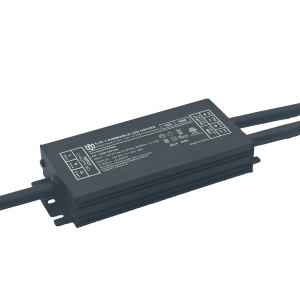Unlocking New Frontiers in Triac Dimmable Power Supplies: The Perfect Fusion of High-Efficiency Drive & Smart Control
Revolutionizing Light Control Through Intelligent Engineering
Modern lighting demands more than basic on/off functionality – it requires dynamic range, adaptive performance, and seamless integration with digital ecosystems. Enter triac dimmable power supplies: sophisticated components that bridge traditional electrical infrastructure with next-generation smart technologies. Unlike conventional drivers limited to fixed output levels, these units employ pulse-width modulation (PWM) algorithms alongside triac semiconductor switching to achieve flicker-free dimming across 0-100% luminosity spectrum. Their true breakthrough lies in maintaining >92% conversion efficiency even at partial loads, drastically reducing wasted wattage compared to linear regulators.
Decoding the Synergy Between Hardware Precision and Software Intelligence
At the heart of every premium unit beats a dual-core processor coordinating real-time tasks: monitoring grid voltage fluctuations, calculating optimal firing angles for thyristors, and processing wireless commands from Zigbee/Wi-Fi hubs. This hardware-software cohesion enables features like adaptive overcurrent protection that self-adjusts thresholds based on connected load profiles. For installers, universal compatibility with leading building management systems eliminates complex reconfiguration – simply plug into standard M12 connectors and start transmitting telemetry data including V/A measurements, temperature logs, and predictive maintenance alerts through cloud platforms.
Architectural Advantages Reshaping Industry Standards
The modular architecture separates high-voltage isolation stages from low-voltage control circuitry using reinforced PCB barriers compliant with IEC 61347 safety standards. Thermal management gets equally innovative: graphite heat spreaders conduct excess energy toward aluminum extrusion fins while maintaining IP65 sealing against dust ingress. Field tests demonstrate stable operation across -30°C to +60°C extremes, making them ideal for warehouse refrigeration zones or sunbaked outdoor kiosks. Manufacturers report MTBF figures exceeding 100,000 hours when paired with quality LED arrays.
Realizing Tangible Value Proposition Across Use Cases
Commercial deployments reveal compelling ROI metrics: hotels using occupancy sensors linked to these supplies cut lighting costs by 42% annually without sacrificing guest comfort. Horticultural facilities leverage programmable spectra tuning to accelerate plant growth cycles by 27% versus static HID setups. Even residential users benefit through smartphone apps offering sunset simulations and vacation mode scheduling. Crucially, all configurations support legacy trailing-edge dimmers, allowing retrofit projects to preserve existing wiring while gaining intelligent capabilities.
Future Trajectory Toward Autonomous Power Networks
Emerging firmware updates introduce machine learning routines that analyze usage patterns to preemptively adjust light output before manual intervention occurs. Some models now integrate harvested energy storage cells capturing braking regenerative current from motorized blinds. As Matter protocol adoption grows, expect interoperability between previously siloed systems – imagine security cameras triggering emergency lighting pulses automatically during alarm events. This convergence positions triac dimmable supplies not merely as power converters but as central nervous systems for intelligent buildings.
Overcoming Last Mile Challenges Through Standardization
Industry bodies like Zhaga are pushing standardized mechanical footprints enabling hot-swappable replacements without tool modifications. OpenAPI frameworks allow third-party developers to create custom dashboards displaying aggregated facility metrics. Most importantly, global certification bodies now mandate electromagnetic compliance up to 30MHz bands, eliminating interference risks with wireless presentation systems. These collective efforts ensure widespread adoption beyond early adopter niches into mainstream construction codes worldwide.

 A New Benchmark in Energy Sav
A New Benchmark in Energy Sav
 The Future Outlook for Triac
The Future Outlook for Triac
 The Application Advantages of
The Application Advantages of
 Innovative Design + Outstandi
Innovative Design + Outstandi
